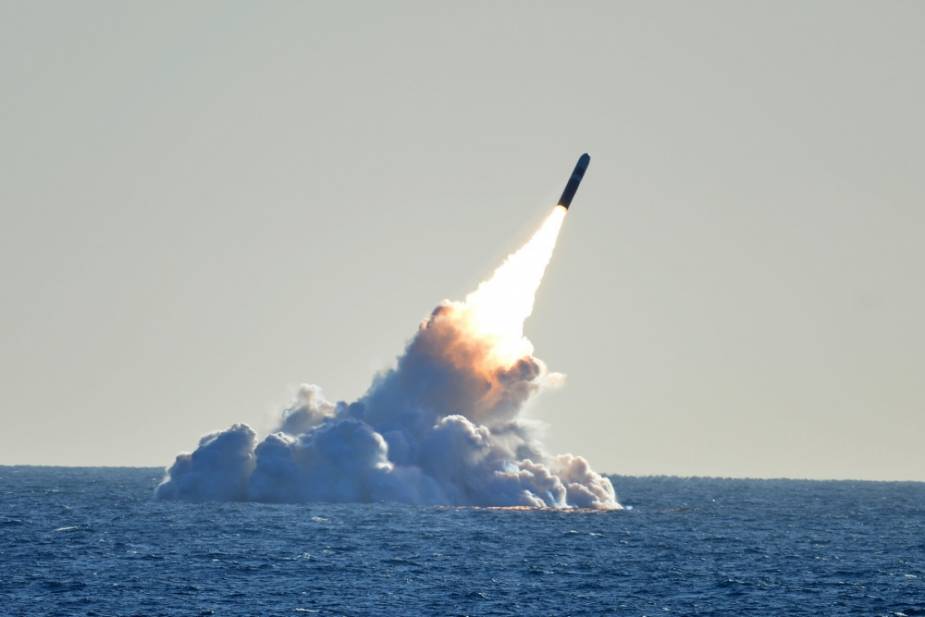Breaking news
Lockheed Martin to provide strategic weapon system Trident fleet support for Columbia-class submarines.
According to a contract published by the United States Department of Defense (DoD) on December 18, 2020, Lockheed Martin Corp., Rotary and Mission Systems, Mitchel Field, New York, is awarded a $9,273,205 cost-plus-incentive-fee and cost-plus-fixed-fee contract modification to previously awarded and announced a contract for the U.S. and United Kingdom (U.K.) to provide strategic weapon system Trident fleet support, Trident II SSP Shipboard Integration (SSI) Increment 8, SSI Increment 16, Columbia class and U.K. Dreadnought class navigation subsystem development efforts.
Follow Navy Recognition on Google News at this link
 An unarmed Trident II D5 missile launches from the Ohio-class ballistic missile submarine USS Nebraska (SSBN 739) off the coast of California. (Picture source U.S. Navy)
An unarmed Trident II D5 missile launches from the Ohio-class ballistic missile submarine USS Nebraska (SSBN 739) off the coast of California. (Picture source U.S. Navy)
The Columbia (SSBN-826) class is a program to design and build a class of 12 new ballistic missile submarines (SSBNs) to replace the Navy’s current force of 14 agings Ohio-class SSBNs. The Navy wants to procure the first Columbia-class boat in FY (Fiscal Year) 2021. Research and development work on the program has been underway for several years, and advance procurement (AP) funding for the first boat began in FY2017.
The Columbia-class is new generation of nuclear-powered submarine build for the U.S. Navy as well as for the United Kingdom under the class name Dreadnought. The submarine will be equipped with 16 missile launch tubes instead of 24 missile launch tubes on Ohio-class submarines able to launch Trident submarine-launched ballistic missile.
The Trident II D5 is the latest generation of the U.S. Navy's submarine-launched fleet ballistic missiles, following the highly successful Polaris, Poseidon, and Trident I C4 programs. First deployed in 1990, the Trident II D5 missile is currently aboard OHIO-class and British VANGUARD-class submarines.
Lockheed Martin Space Systems Company, the Navy's Trident missile prime contractor, developed and produced the missile and support equipment. The company also supplies technical and logistical support at sites where the missiles are deployed.
The launch of Trident missile from the submarine occurs below the sea surface. The missiles are ejected from their tubes by igniting an explosive charge in a separate container which is separated by seventeen titanium alloy pinnacles activated by a double alloy steam system.
The Trident missile is fitted with an Inertial Guidance System with an additional Star-Sighting system (this combination is known as astro-inertial guidance), which is used to correct small position and velocity errors that result from launch condition uncertainties due to errors in the submarine navigation system and errors that may have accumulated in the guidance system during the flight due to imperfect instrument calibration. It has a maximum firing range of 7,360 km (4,000 nautical miles).



























